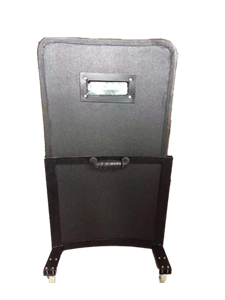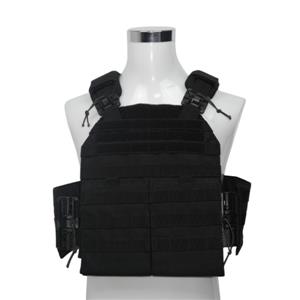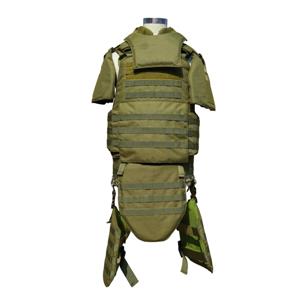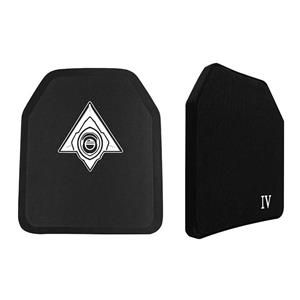Can a knife pierce through a Kevlar bulletproof vest?
Kevlar fiber is an artificial synthetic material with magical properties, which is excellent in many cases, but it is difficult to know where its limits lie. It is super durable and resistant to cutting, but will the knife pierce through Kevlar? Kevlar fibers are skilled at preventing and distributing sudden and powerful forces, but knives can usually pierce Kevlar fibers because they exert continuous pressure between the strands of the fabric. To prevent the knife from piercing the Kevlar fiber, you must stack multiple layers of material or have a hard insert to block the knife.
When discussing the performance and stopping ability of Kevlar helmets that successfully block bullets to save lives, people will use many scientific terms and confusing numbers. So, let's put aside form, complex data, and confusing terminology and take a deeper look at Kevlar and how good it is in preventing a stab.
How to prevent knives from piercing Kevlar
Simply put, a knife can usually pierce through a layer of Kevlar fabric, but you can do some things and modifications to prevent this from happening. There are two main methods to reinforce Kevlar to withstand knife injuries:
Stacking multiple layers or tightly woven Kevlars - Stacking multiple layers of Kevlar fabric does not prevent the knife from passing through the outer layer, but usually slows down the speed, making it impossible to pass through all the way.
▲ Adding a rigid insert or resin coating to Kevlar fiber fabric - Placing a rigid and sturdy insert plate (usually made of Kevlar fiber and artificial resin or steel wire) below the Kevlar will help prevent the knife from passing through. Applying a thick resin coating on Kevlar can also achieve a similar effect. Now that you have understood two basic techniques to prevent a knife from piercing Kevlar, let's take a look at these two basic knife movements and how to prepare.
Stabbing bayonet technique
In a typical stabbing motion, the blade will continuously apply a certain amount of pressure to a specific area of Kevlar. Although Kevlar is a sturdy and durable material with excellent impact resistance, the tip of most cutting tools can penetrate a single layer of Kevlar. Kevlar is a fabric made of carefully woven fibers, with the blade sliding along the surface until it gets stuck in a part between the fibers. The force behind the stabbing action will force the blade to pass through Kevlar.
Generally speaking, the best solution to prevent a knife from piercing a Kevlar is to use multiple layers of Kevlar to prevent the blade from piercing.
The tip of the bayonet will pierce through the first few layers of the aforementioned Kevlar, but it will lose a bit of momentum each time. In the end, the blade will pass through enough layers of Kevlar fibers to become entangled in the weaving process and completely stop.
Cutting knife technique
The cutting tool used during cutting usually has a blade that can also cut open the Kevlar. Kevlar is usually more capable of withstanding cutting forces than stabs, but ultimately, the blade will still penetrate the Kevlar fibers.
The movement of cutting will begin with sudden pressure in the contact area, where Kevlar typically yields. But Kevlar excels at absorbing and redistributing the pressure of cutting motion on its surface, but if the sharp blade breaks through on first contact, all life saving bets will be lost.
To prevent cutting through Kevlar with a knife, you can use multiple layers of Kevlar fabric, but rigid inserts or resin coatings are usually better choices. As long as Kevlar can withstand the initial impact of the slice, the rigid insert or resin coating will allow the blade to slide without gaining traction in subsequent movements.
How many layers of transparent Kevlar are needed to stop a knife?
In most cases, stacking multiple layers of Kevlar is an excellent strategy to block the blade, but this does not guarantee safety. Most experienced tool users can cut multiple layers of Kevlar without any problems, as long as they use a bayonet piercing action on the cutting.
The stabbing action of a single layer of Kevlar fibers will cut between tightly woven Kevlar fibers, while a piece of fiber (if not initially in contact) will slide along the surface, usually unable to find traction and pass through. At the right angle and with sufficient force, almost any knife can pierce multiple layers of Kevlar. Kevlar is not good at stopping tool penetration or cutting without resin coating or rigid inserts. Using a cutting action to stop a knife from cutting through Kevlar fibers requires 5 to 10 layers of Kevlar to stop the blade from cutting, but even so, safety is far from guaranteed. If a knife using a bayonet action exerts too much force at a point, it is almost impossible to stop using the blade alone to cut open the Kevlar. The only way to stop the stabbing and scratching of the tool within 100% safety is to thicken and layer the Kevlar material to a thickness of about the blade length.
What exactly is Kevlar?
Without involving the interpretation of Kevlar's overly complex chemical molecular structure, it is essentially a DuPont branded aramid polyamide fiber. Kevlar was created and synthesized by American female chemist Stephanie Kwolek in 1965. It is an artificial synthetic material with incredible strength and thermal properties.
The mother of modern bulletproof fibers - American female chemist Stephanie Kevlar (1923-2014) and her Kevlar products have been used in various products since the birth of Kevlar, including ropes, radial tires, snowboards, bulletproof helmets, underwater equipment, protective vests, and various other items and equipment. Kevlar is usually the most famous aramid fiber, but it is just a brand logo. There are many other similar and arguably better artificial materials than Kevlar, including Nomex, Technora, and Twaron. Since you have some understanding of Kevlar, let's take a look at the advantages and disadvantages of this bulletproof material.
Advantages of Kevlar
Considering the bulletproof performance of Kevlar, it is very lightweight and can be made into a bulletproof vest to wear on the body; Kevlar is very durable and wear-resistant; Kevlar fibers are very suitable for withstanding extreme temperatures.
The Disadvantages of Kevlar
Without further reinforcement of Kevlar, the efficiency of stopping tool stabbing and cutting is not high; Moreover, Kevlar gradually degrades and ages under prolonged exposure to high-temperature sunlight and ultraviolet radiation, while its bulletproof performance also gradually decreases. Therefore, preventing tool cutting, stabbing, and manipulating Kevlar to resist may be an unsuccessful challenge.




